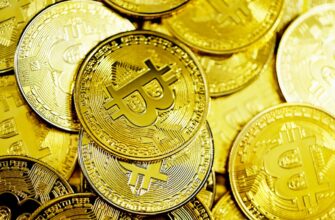## Introduction
In the volatile world of cryptocurrency, stablecoins like USDT and USDC provide crucial stability. As the two largest dollar-pegged assets, understanding their differences is essential for traders, investors, and DeFi users. This comprehensive guide examines Tether (USDT) and USD Coin (USDC) across security, transparency, adoption, and real-world utility to help you make informed decisions.
## What Are Stablecoins?
Stablecoins are cryptocurrencies designed to maintain a fixed value, typically pegged 1:1 to fiat currencies like the US dollar. They bridge traditional finance and crypto by offering:
– Price stability in volatile markets
– Faster cross-border transactions than banks
– DeFi ecosystem compatibility
– Hedging against crypto market swings
## Tether (USDT): The Market Leader
Launched in 2014, Tether pioneered the stablecoin concept. Operated by Hong Kong-based Tether Limited, it dominates with over $110 billion market cap (as of 2023). Key characteristics:
**How It Works:**
1. Users deposit USD with Tether
2. Equivalent USDT tokens are minted
3. Backing reserves include cash, treasury bills, and commercial paper
**Adoption Advantages:**
– Supported on 150+ exchanges including Binance and Kraken
– Highest liquidity for crypto trading pairs
– Available on 14 blockchains (Ethereum, Tron, Solana, etc.)
**Controversies:**
– Historical lack of transparent audits
– $41 million fine by CFTC in 2021 for reserve misstatements
– 23% of reserves in unspecified “other investments” (Q1 2023 report)
## USD Coin (USDC): The Regulated Alternative
Founded in 2018 by Circle and Coinbase, USDC prioritizes regulatory compliance. With $26 billion market cap, it’s the second-largest stablecoin. Core features:
**How It Works:**
– Fully reserved by cash and 3-month U.S. Treasuries
– Monthly attestations by Grant Thornton accounting firm
– Compliant with US money transmission laws
**Trust Advantages:**
– BlackRock manages portion of treasury reserves
– Integrated into Visa’s payment network
– Native support on Ethereum, Algorand, and Stellar
**Recent Challenges:**
– Temporary depeg during 2023 banking crisis
– Slower exchange adoption than USDT in Asia
## USDT vs USDC: 5 Critical Differences
1. **Transparency**
USDC: Monthly audited reserves, breakdown public
USDT: Quarterly reports, less asset detail
2. **Regulatory Compliance**
USDC: Fully licensed in US/UK, complies with OFAC sanctions
USDT: No U.S. state licenses, less regulatory oversight
3. **Reserve Composition**
USDC: 100% cash and short-term treasuries
USDT: ~80% cash/treasuries, remainder in corporate debt and bitcoin
4. **Market Position**
USDT: 68% stablecoin market share, preferred for trading
USDC: Dominates institutional DeFi with $7B locked in protocols
5. **Blockchain Support**
USDT: Wider network coverage (Polygon, Avalanche, Omni)
USDC: Stronger Ethereum ecosystem integration
## Which Should You Choose?
**Opt for USDT if:**
– Trading altcoins with high liquidity pairs
– Minimizing transaction fees on Tron network
– Accessing Asian exchanges
**Choose USDC when:**
– Regulatory compliance is critical
– Participating in U.S.-based DeFi protocols
– Holding long-term reserves
## FAQ: USDT and USDC Explained
### Is USDT safer than USDC?
No. USDC’s transparent reserves and regulatory compliance generally make it lower risk. USDT carries higher counterparty risk due to opaque holdings.
### Can I convert USDT to USDC without fees?
Usually not. Exchanges like Kraken charge 0.1-0.2% conversion fees. Cross-chain swaps may incur gas costs.
### Which has higher trading volume?
USDT dominates with $50B daily volume vs USDC’s $5B (CoinMarketCap 2023 data). Most BTC/ETH pairs use USDT.
### Are both stablecoins FDIC-insured?
No. Neither provides FDIC insurance, though USDC reserves include cash in FDIC-insured banks (not covering token holders).
### How do I store them securely?
Use:
– Hardware wallets (Ledger/Trezor)
– Non-custodial software wallets (MetaMask)
– Avoid keeping large amounts on exchanges
## Final Verdict
USDT offers unparalleled liquidity for active traders, while USDC provides superior transparency for risk-averse holders. Diversifying between both mitigates single-point failure risks. As regulatory scrutiny increases, USDC’s compliant approach positions it for long-term growth, though USDT remains indispensable for global crypto markets. Always verify audit reports before large allocations.








